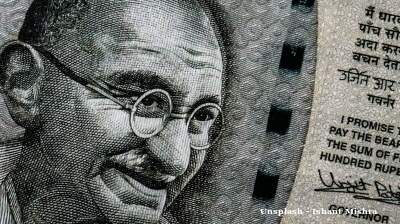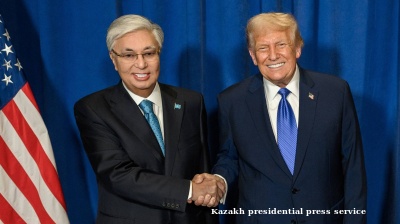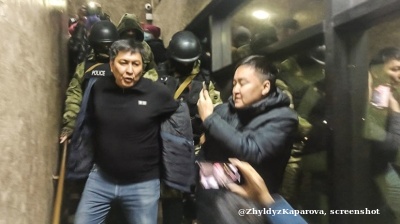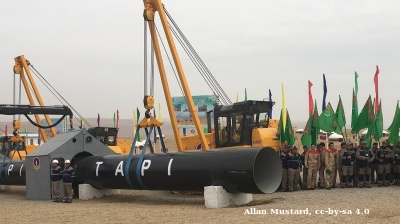Russia’s war in Ukraine has brought a new importance to Central Asia and presented the region’s governments with new opportunities.
Russia, China, the European Union and the United States have noticeably increased their engagement with Central Asia since the Russian military invasion of Ukraine in February last year. However, preserving a balance in relations with Russia, China, and the West during these turbulent times has become more complicated.
The Kremlin’s decision to invade Ukraine has turned Russia into an international pariah.
Yet Moscow needs allies.
Russian President Vladimir Putin visited all five Central Asian countries in 2022 and other top Russian officials have been regularly making trips to the region since the invasion to firm up ties.
Russia’s biggest market for oil and natural gas exports had been the EU, but part of the EU’s sanctions involved a drastic reduction of both. Moscow was forced to look for alternative customers.
Russia reached a 10-year agreement with Kazakhstan last December to ship some 10mn tonnes of oil annually through Kazakhstan to China.
After three consecutive winters of gas shortages, Uzbekistan is working with Russia on a Russian proposal to ship gas to Uzbekistan via pipelines that once carried Uzbek gas to Russia.
Kazakhstan has faced similar gas shortages in recent winters and is also discussing gas imports from Russia.
Moscow also needs help to avoid sanctions that ban exports of a variety of goods to Russia and companies in Kazakhstan, Kyrgyzstan and Uzbekistan have been mentioned as participating in the reexport of banned products to Russia.
Moscow has shown it can exert pressure to keep the Central Asian states close to Russia.
Kazakhstan exports some 80% of its oil through the pipelines of the Caspian Pipeline Consortium (CPC) that bring the crude to the Russian Black Sea port of Novorossiysk for loading onto tankers. Many of those tankers are bound for EU countries.
In the first weeks of the war in Ukraine, Kazakh officials publicly said that they would not recognise the independence of the Russian-occupied Donetsk and Luhansk regions of eastern Ukraine.
In late March 2022, port authorities at Novorossiysk said a storm had damaged two of the three mooring points and until repairs were completed Kazakhstan would lose 1mn barrels per day of oil exports.
Following those repairs, operations were suspended three more times for various reasons before the end of August.
The recent Victory Day parade in Moscow serves as another example of exerted pressure. Less than one week before the May 9 celebrations on Red Square, Kyrgyzstan’s president was the only Central Asian leader scheduled to attend.
During the 72 hours before the parade started, the other four Central Asian presidents, one-by-one, suddenly announced they would go to Moscow for Victory Day.

A bit of pandemic period elbow-to -elbow diplomacy took place when the top diplomats of China and Central Asia got together for 'new format' talks in Xian, China, in May 2021 (Credit: Chinese foreign ministry).
China, meanwhile, is gaining influence in Central Asia because Chinese policies towards the region remain consistent at a time when Russia’s relationship with it is changing.
Beijing sent a message about its interest in Central Asia when President Xi Jinping in September last year paid his foreign visit since the COVID-19 pandemic to Kazakhstan. He then went on to Uzbekistan for a Shanghai Cooperation Organization (SCO) summit.
China’s trade with Europe was affected by the disruptions that sanctions caused to Russian transit routes, so Beijing has been energetically promoting the Middle Corridor through Central Asia and the South Caucasus to Europe.
Infrastructure is in place but it needs to be expanded. Both China and EU countries are helping with this, while urging the Central Asian countries, Azerbaijan and Georgia to quicken their efforts in upgrading Middle Corridor options and capacity.
The Kremlin has kept quiet about the development of the Middle Corridor, but Russian officials must be unhappy about the growing success of this rival trade route.
Russian officials must also be concerned that following a lowkey Victory Day parade in Moscow where no significant agreements were signed on the sidelines, the five Central Asian presidents went to Xian, China on May 18-19 to meet with Xi. Dozens of agreements worth billions of dollars were signed.
Russia’s partnership with China is particularly important right now. It allows the Kremlin to point to a powerful ally, while Western nations try to cripple Russia with sanctions.
In such a situation, Moscow cannot criticise Chinese moves in Central Asia or the expansion of the Middle Corridor.

The EU's top diplomat Josep Borrell was in Samarkand, Uzbekistan, last November (Credit: @JosepBorrellF/Twitter).
The EU and US have also been active in Central Asia since the invasion.
EU foreign policy chief Josep Borrell visited Kazakhstan, then met with all five Central Asian foreign ministers in Uzbekistan last November.
Prior to Borrell’s trip, European Council President Charles Michel met with four of the five Central Asian presidents (Turkmenistan sent a deputy chairman of the cabinet of ministers) in Astana, Kazakhstan, before he also continued on to Uzbekistan.
Also, Michel has presently started a June 2-3 meeting with Central Asia’s leaders on the shores of Lake Issyk-Kul, Kyrgyzstan.
The EU wants more energy imports from Central Asia to offset the loss of oil and gas purchased from Russia prior to the Ukraine war.
Kazakhstan reached an agreement with Azerbaijan in early 2023 to annually ship up to 1.5mn tonnes of oil through the South Caucasus, most of it bound for customers in Europe.
The first shipment was sent from Kazakhstan to Azerbaijan in March.
The EU would like to see Turkmenistan start shipping gas to Europe, though Ashgabat remains reluctant to do this over fears of angering gas-rich Caspian neighbours Russia and Iran.
The EU does not have as much to offer as China, or even Russia can to Central Asia, but the bloc is working on projects in Central Asia such as green energy that will provide long-term benefits for the region, without its countries incurring large debts.

US Secretary of State Antony Blinken met his Central Asian peers in Kazakhstan in February. The US message to Central Asia is roughly "Less Russia, not too much China" (Credit: Kazakh foreign ministry).
US Secretary of State Antony Blinken visited Kazakhstan and Uzbekistan at the end of February and early March this year.
Washington supports Central Asia reducing its dependence on Russia but does not wish to see the region instead grow overly close to China.
The US offers less to Central Asia financially than even the EU (though the EU is Kazakhstan’s largest trade partner), but America is a vital security partner for Central Asia, particularly as concerns Afghanistan.
The US gave Uzbekistan 50 military vehicles worth $2.8mn in October 2022 and Tajikistan reconnaissance drones worth $20mn in May 2022.
The Central Asian states are profiting from this sudden heightened interest from Russia, China, the EU and US and the competition among the four to coax the Central Asian states closer to them.
One of the biggest problems for the Central Asian states in maintaining good ties with all four parties and continuing to reap the benefits from this situation is adherence to the Western sanctions on Russia.
Russia wants cooperation from its Central Asian friends in avoiding those sanctions. Some of the goods being smuggled into Russia are coming from China and Beijing seems to have no qualms about this.
The EU and US want cooperation in preventing sanctioned goods from reaching Russia, but so long as the situation in Ukraine remains a stalemate, the Central Asian states are unlikely to make serious efforts to cut the flow of these products through their territories to Russia.
What the Central Asian governments fear most is being ousted by their own people. Kyrgyzstan, for instance, has been through three revolutions since 2005.
Russia and China want the status quo in Central Asia preserved and oppose so-called colour revolutions.
Central Asia’s two giant neighbours offer the region’s regimes support in holding onto power. The West won’t offer such support, so chances are that the region will remain closer to China and Russia than to the West.
To keep ties with Central Asia from souring, the West might have to accept half-hearted Central Asian promises to adhere to sanctions on Russia or pursue democratic reforms.
Features

COMMENT: For Asia, dealing with Europe isn’t about achieving success; it’s about concealing failure
To be taken seriously in Asia, Europe must rediscover the courage to deliver, not merely declare. Asia has moved on to execution. Europe is still editing its initial policy draft.
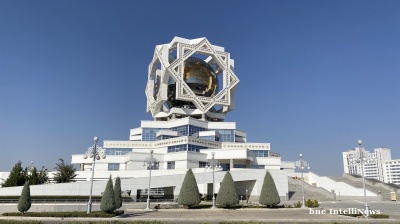
Washington has a new focus on a Caspian energy play
For most of the last three decades since winning independence, Central Asia has been a bit of a backwater. Not any more. The Trump administration is becoming more focused on Turkmenistan's vast gas reserves and can smell money and power there.

BOTAŞ and Turkey’s hub ambition: from “30-year dream” to cross-border reality
For Ankara, the symbolism is as important as the molecules: Turkey’s energy map is shifting from end-market to hub.
